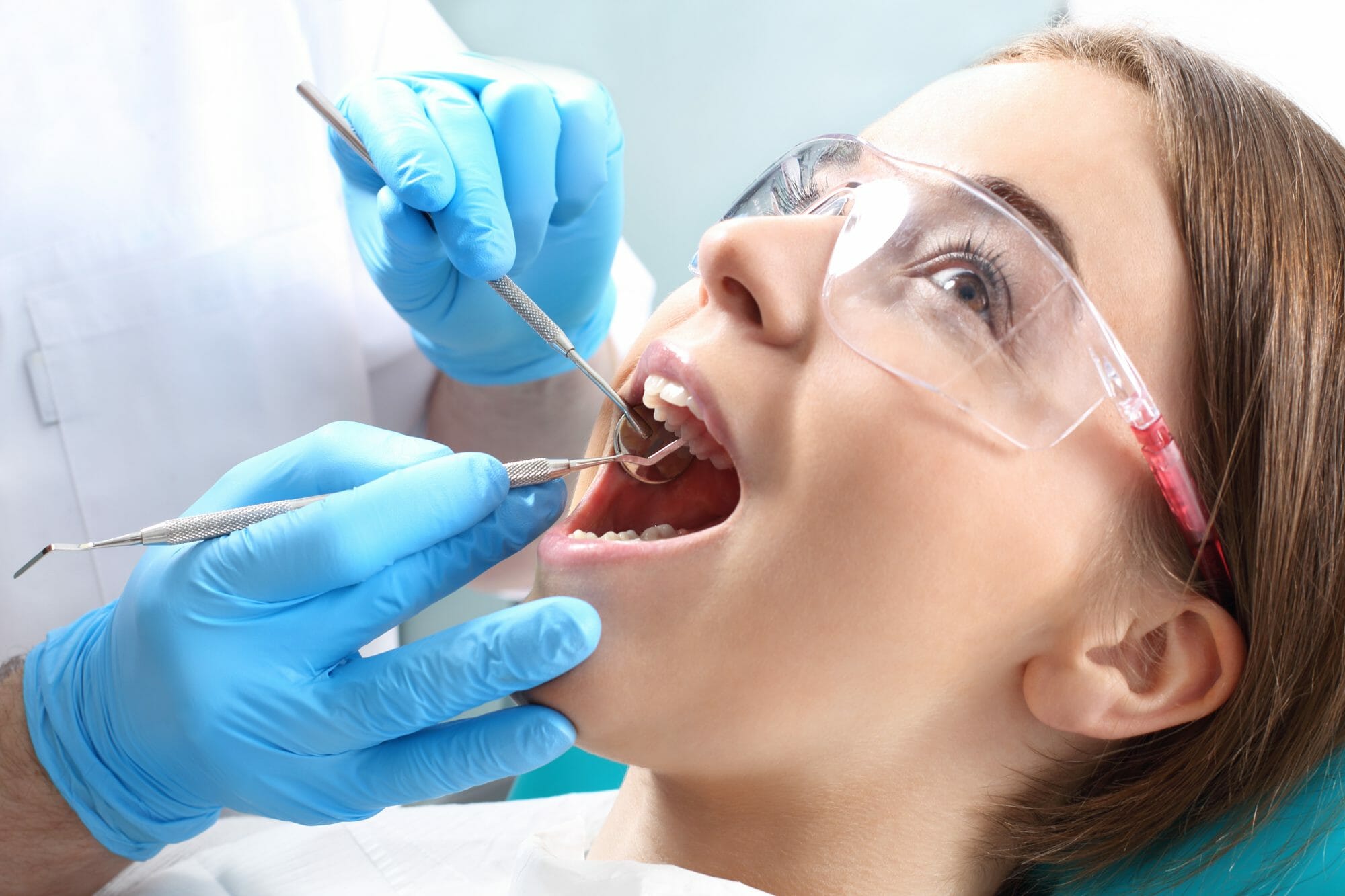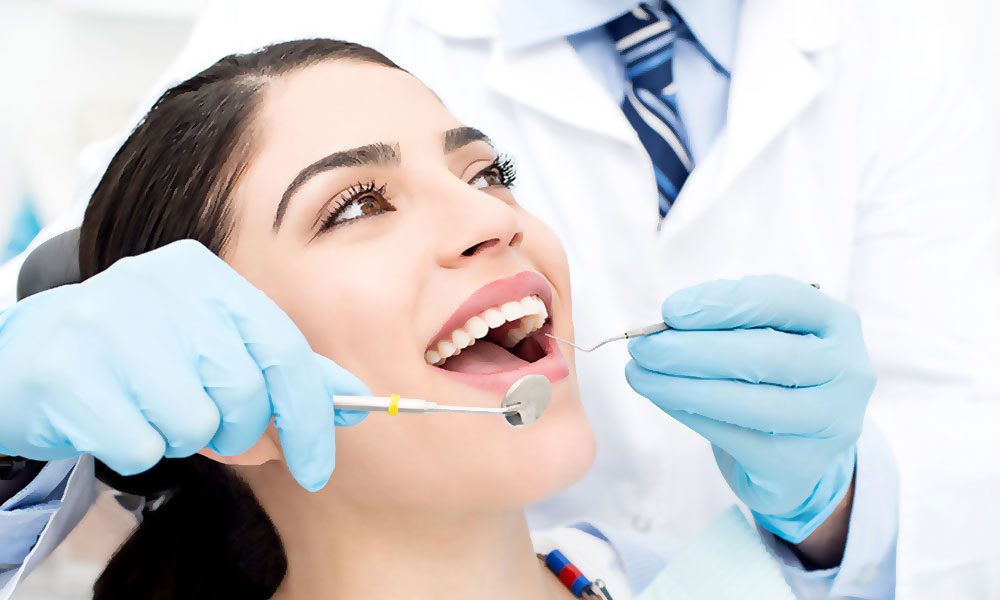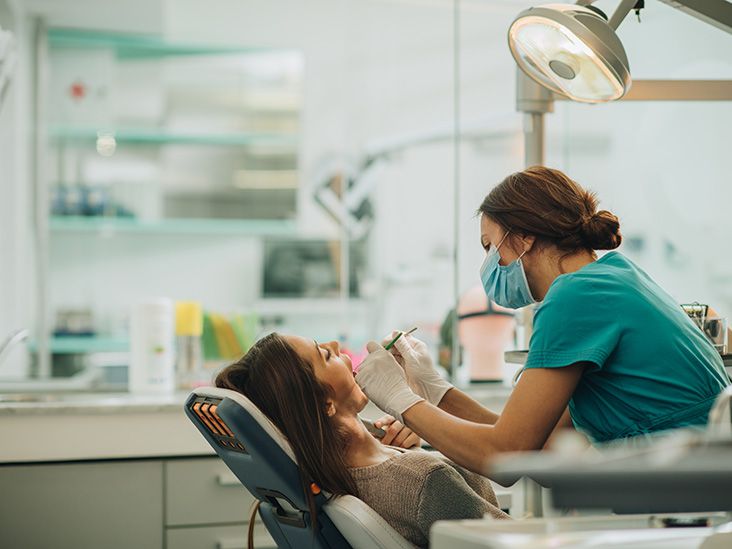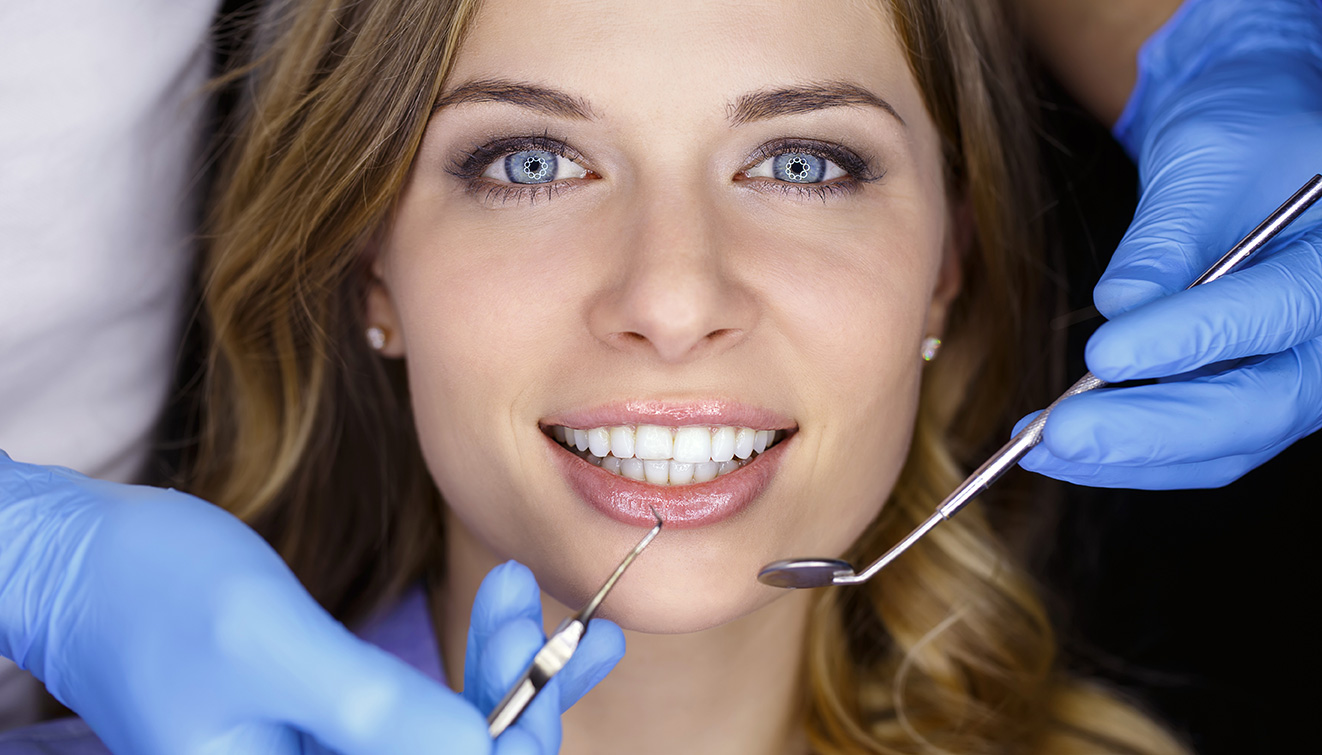
Introduction
Edentulism has been demonstrated to have negative social and psychological effects on individuals that include adverse impacts on facial and oral esthetics, masticatory function and speech abilities, that when combined, are translated into significant reductions in patients’ quality of lives. It is well-known that immediate placement of implants is a
challenging surgical procedure that requires proper treatment planning and surgical techniques. In order to restore severely atrophic maxillae and mandibles, a number of prosthetic options have been developed, including traditional complete dentures, implant- supported removable prostheses, and implant-supported fixed prostheses. Due to the proximity of important anatomical structures, poor bone quality, and limited availability of bone, implant-supported prostheses may not be feasible in many situations.
The all-on-four concept's implant technology is being promoted as an alternative to traditional implant uses. In the all-on-four technique, four implants are inserted into the mandible's interforaminal region and into the premaxilla in cases of complete edentulism. The
all-on-Four concept is an exception; it only requires 4 implants to support an acrylic, screw-retained provisional prosthesis that is delivered on the day of implant placement and a final prosthesis that is delivered about 4 months later. The patient may also gain from the immediate rehabilitation of edentulous arches, which helps preserve quality of life and self- esteem. (1)
"All-on-4" is a term used to describe a dental implant system that is designed to replace a full arch of missing
teeth with just four implants. The procedure involves the placement of four implants in the jawbone, which are strategically placed to support a full arch of teeth. The All-on- 4 system is typically used for patients who have lost most or all of their teeth and are seeking a fixed, permanent solution.
The All-on-4 system was developed by Dr. Paulo Malo in the late 1990s as an alternative to traditional implant-supported dentures. The system uses angled implants to maximize the use of available bone, allowing for a full arch of teeth to be supported by just four implants. This can be a significant advantage for patients who may not have enough bone to support multiple implants or who are looking for a more cost-effective solution to traditional implant-supported dentures.
ALL ON 4 PROTOCOL A GRAFT LESS SOLUTION
It is difficult to restore biomechanically compromised edentulous ridges using standard implant protocols, particularly in cases where the ridges have been moderate to severely resorbed. Complete edentulous and failing dentition conditions can be restored with the surgical concept of All-on-4 in a predictable manner, promising a positive and long-lasting outcome. With four implants in each arch, two of which are tilted to increase the anterior-posterior spread of the implants, this procedure, which relies on immediate loading and does not require bone grafting, can be carried out in either or both of the arches. This enables the use of longer implants and reduces or eliminates distal cantilevers. Additionally, while staying within physiological bounds, the implants are positioned to take advantage of the anchorage provided by bicortical stabilization, which enables the insertion of high implant torque. (2) (3)
THE PRINCIPLES FOR THE ALL-ON-4 TECHNIQUE
- Immediate function with a fixed implant-supported all-acrylic bridge
- Use of a cantilever, if necessary
- Four implants placed for full arch reconstruction
- No need for bone graft
- An angulation of the posterior implants of no more than 45°
- Implants anchorage in the jaw bone or not
- Use of a cantilever, if necessary
- Bone reduction, if necessary (4)
WHEN SHOULD WE PROCEED WITH THE ALL-ON-4 SURGICAL PROTOCOL?
The availability of bone is the determining factor when choosing the All-on-4 surgical protocol. If there is enough bone, parallel implants in the jaw bone can be used for rehabilitation. However, if there is not enough bone and bone grafting is not an option, the All-on-4 surgical protocol may be implemented instead.
THE ALL-ON-4 SURGICAL PROTOCOL FOR THE MAXILLA
The bicortical stabilization principle states that implants should be placed both in the zygomatic and on the cortical surfaces of the nasal cavity in order to improve their primary stability. This will make it possible to adhere to a quick-loading protocol. For the maxilla, the surgical approach may be Standard, Hybrid, or Double Zygoma.
For the maxilla, the anterior wall of the maxillary sinus is the landmark taken into account, while for the mandible, it is the region included between the mental foramina.
All four implants are capable of attaching to the cortical bone that forms the nasal cavity's floor using conventional techniques. In the hybrid approach, the distal zygomatic implants anchor to the zygomatic bone while the two parallel straight implants can, if necessary, engage the cortical bone of the nasal cavity's floor for additional anchorage. The two zygomatic implants placed bilaterally engage the zygomatic bone in the double zygoma approach.
Standard Approach 1: In order to place two parallel straight implants in the premaxilla in canine position and have the distal tilted implants' entrance sites coincide with the first molar region on either side, bone must extend to the first molar region. Distal cantilever is not required during final prosthetic rehabilitation.
Standard approach 2: In order to place two parallel straight implants in the premaxilla in the lateral incisor position and have the distal tilted implants' entrance sites coincide with the second premolar region on either side, bone must extend until the second premolar. To achieve first molar occlusion during final prosthetic rehabilitation, a single-tooth cantilever design distal to the tilted implants may be required
Standard approach 3: In order to place two parallel straight implants in the premaxilla in the lateral incisor position and have the distal tilted implants' entrance site coincide with the second premolar region on either side, bone must extend until the second premolar. To achieve first molar occlusion during final prosthetic rehabilitation, a single-tooth cantilever design distal to the tilted implants may be required.
Al-on-4 hybrid: Bone is available only on the premaxilla such that two parallel straight implants are placed in the ventral or lateral incisor positions and engage the cortical white of the floor of the nasal cavity, and the distal tilted in pans are placed in the zygomatic bone bilaterally.
Al-on-4 double zygoma: when the resorption of maxillary bone is at extreme level it becomes impossible to utilize it for implant placement; Two tilted long zygomatic implants placed in the zygomatic bone bilaterally for the implant anchorage (Fig. 18-9, A and B).
THE ALL-ON-4 SURGICAL PROTOCOL FOR THE MANDIBLE
Anterior to the mental foramina four implants are placed for the mandible.
- two anterior implants are a parallel set of implants
- two distal implants are tilted implants
FINAL PROSTHETIC REHABILITATION BRIDGE PROTOCOL
The options for final prosthetic rehabilitation are the following:
- Bridges: Due to its superior mechanical qualities and improved aesthetics, bridges are the preferred option as the final prosthesis to restore an All-on-4 case. It consists of the following: a single-piece, screw-retained titanium CAD-CAM milled framework covered in ceramic or
- Ceramic Bridge: 12 individually cemented all-ceramic crowns (lithium disilicate) as the primary option, with pink acrylic resin acting as artificial gingiva in the maxillary arch. The definitive prosthesis can be easily retrieved because it is screw-retained, and if one of the crowns needs to be replaced in the future for aesthetic or functional reasons, it can be done so without compromising the other (5)
- Acrylic Bridge: Denture teeth made of acrylic resin and pink acrylic resin used to simulate Because the prosthesis is screw-retained, it is simple to remove for maintenance or in the event that it needs repair at some point during its lifespan. An example of this is the Ceramic Bridge.
ADVANTAGES OF THE ALL-ON-4 SURGICAL PROTOCOL
- When we need to treat immunocompromised patients such as of diabetes and osteoporosis, this procedure eliminates the need of bone graft.
- No harm to Critical anatomical structures like maxillary sinus and inferior alveolar nerve.
- Bone Grafting is costly Cost of treatment is reduced because in this technique we don’t need any grafting procedure.
- Four implants make hygiene maintenance simpler as compared to larger number of implants placed with reduced inter-implant (5)
- Typically, the under preparation of the osteotomy and the bicortical stabilization (to receive implant placement, allowing a high insertion torque-minimum of 30 Ncm) provide sufficient stability to provide immediate loading through a resin-based prosthesis such as All-Acrylic This enhances aesthetics and also makes routine mastication possible from the day of surgery, Immediate loading also prevents second-stage surgery while improving bone stimulation and subsequently bone response.
- With a success rate of nearly 98%, published literature showed that the All-on-4 procedure has a longer lifespan than grafted cases. The procedure showed a cumulative implant survival rate of 98% and a prosthetic survival rate of 100% in long-term follow-up, demonstrating its predictability and safety.
- One of the biggest advantages is that it allows for a full arch of teeth to be supported by just four implants, which can be a significant cost savings for Additionally, because the implants are strategically placed to maximize bone usage, patients with limited bone structure may still be able to receive the treatment. The system also provides a fixed, permanent solution, which can be more comfortable and functional than traditional dentures.
Disadvantages
- Length of cantilever in the prosthesis cannot be extended beyond the
- Free hand arbitrary surgical placement of implant is not always possible as implant placement is completely prosthetically driven.
- It is very technique sensitive and requires elaborate presurgical preparation such as CAD/CAM, surgical splint (1) (6)
- As with any surgical procedure, there is a risk of infection, bleeding, and other complications. Additionally, because the implants are placed at an angle, there is a risk of implant failure or damage to surrounding teeth or structures. It is important for patients to discuss the risks and benefits of the All-on-4 system with their dentist or oral surgeon before deciding on the
Limitations
- Adequate oral hygiene and general well-being.
- Enough bone for four implants that are at least 10 mm long.
- Implants become stable enough to function (6)
Prosthetic Phase
30º angulated, Straight Abutments and 17º multiunit abutment with different collar heights are placed onto the implants. These are employed to obtain the proper access, permitting relative parallelism, and to enable passive seating of the rigid prosthesis [12]. The impression copings are positioned onto the multiunit abutments, which are then splinted with auto polymerizing resin and wire bars, in order to fabricate the temporary prosthesis on the day
of surgery (2–3 hours after surgery). It makes sure that an accurate transfer is made without the impression copings or impression being accidentally moved. The abutments are covered with protective healing caps while the provisional is being made. Acrylic provisional screw retained prosthesis is torqued to 15 Ncm. Only a soft diet is advised.
If the implants are deemed stable for the final
Figure 8 : Final prosthesis
prosthesis (4-6 months after the initial implant placement), the temporary restoration is removed, and the bite is recorded. The provisional is mounted on an articulator next to a counter model with multiunit laboratory analogues attached. Putty is used to index the prosthesis. The patient's mouth serves as the connection point for the sections of the sectioned resin pattern. The resin pattern is scanned, and
CAD/CAM technology is used to create the framework. After the framework has been tried in, the final prosthesis is produced and delivered. A metal-acrylic resin final prosthesis with titanium-framed acrylic resin dentures or a metal ceramic prosthesis with zirconia-only crowns are both possible. (7)
Conclusion
Comparing the "All-on-4" treatment concept to sophisticated surgical methods without the use of removable prostheses, it appears to be an alternative option for the rehabilitation of edentulous jaws. It is a cost-effective procedure that improves patient quality of life while cutting down on treatment times and morbidity. Prior attempts to treat the severely resorbed maxilla and mandible with dental implants have met with only patchy success. However, the rehabilitation of completely edentulous, atrophied maxilla and mandible through the use of implants placed using the All-on-Four protocol offers new hope for a perceivable success while emerging as a promising treatment option and standard in the care of severely ill patients. (1)
References
1. | Ali SM. All-On-Four Treatment Concept in Dental Implants: A Review Articles. All-On-Four Treatment Concept in Dental Implants: A Review Articles. 2019 Mar; 2(4). |
2. | Malo p RBea. All on 4 immediate fuction concept with brainmark systemimplants for completely edentulous maxilla. In ; 2005. |
3. | Malo p LA,a. All on 4 treatement concept for rehablitation of completely edentulous mandible. 7 year clinical , 5 year radiographic retrospective case. ; 2015. |
4. | zarb Hea. Prosthodontic Treatement for edentulous patients. Soth Asia edition ed. Singapor: Elsevier (Singpor); 2020. |
5. | Malo p ANea. Retrieveable metal ceramic implant supported fixed prosthesis with milled titanium framework and all ceramic crown. Retrospective clinical study with upto 10 year. , prosthodontics; 2012. |
6. | B. Anandh BLVESJJP. All on Four - The Basics. Biomedical and pharmacy journel. 2015. |
7. | M Taruna BC,NS,ST,MA. Prosthodontic perspective to all-on-4® concept for dental implants. publmed. 2014 oct. |












